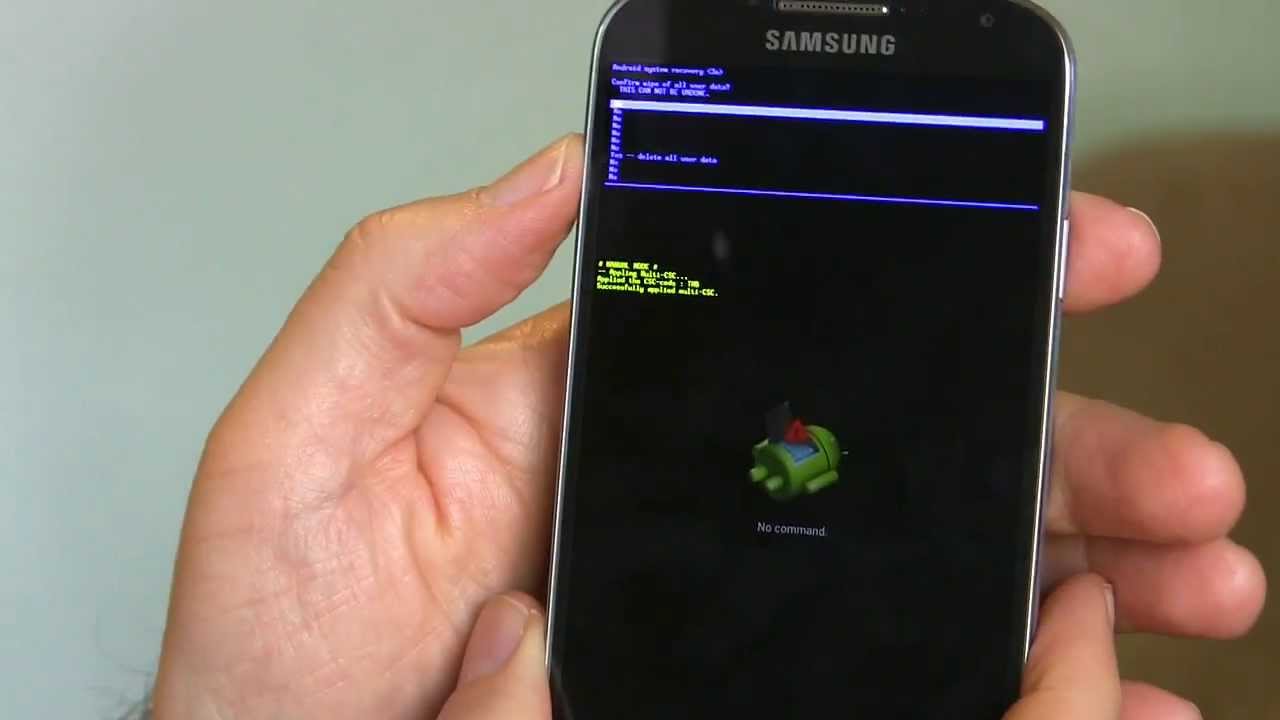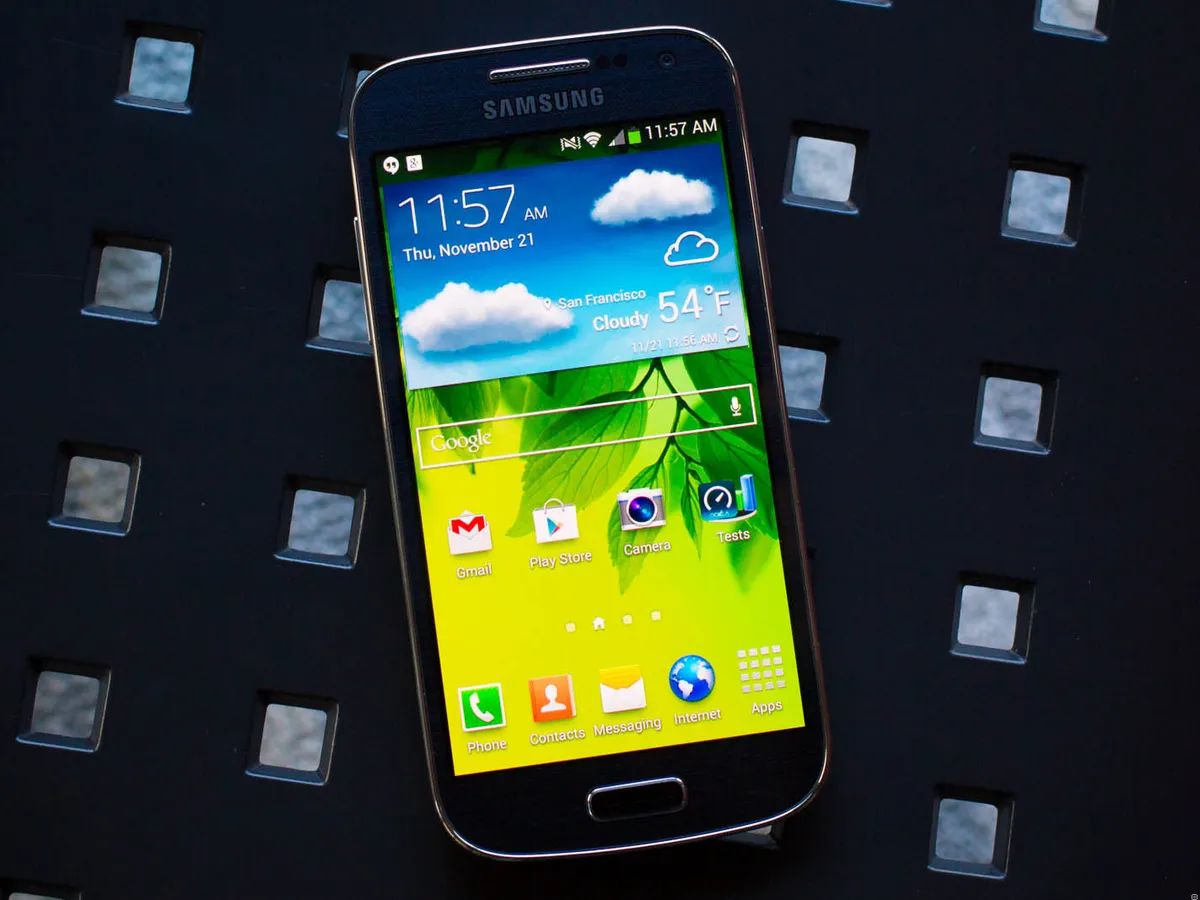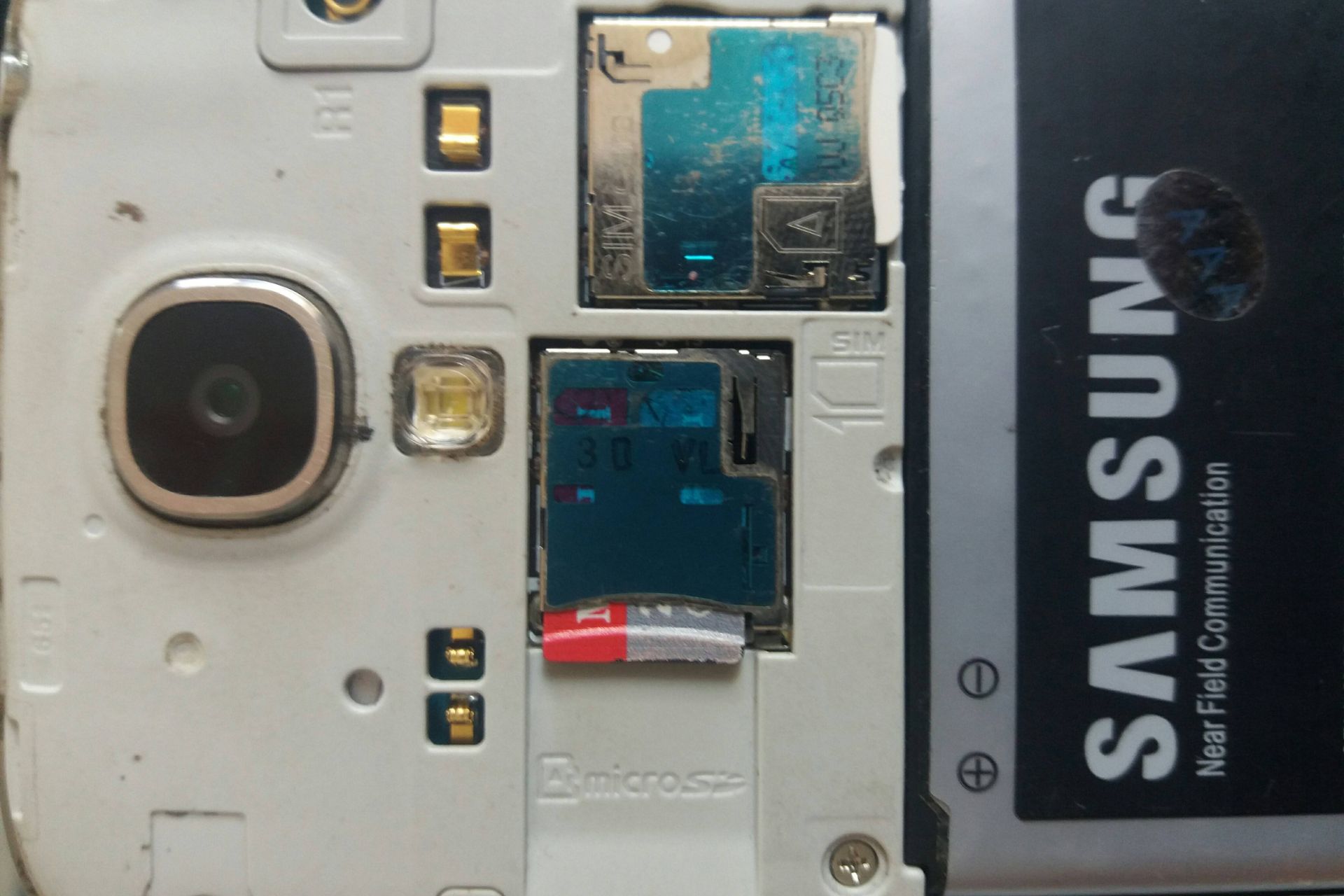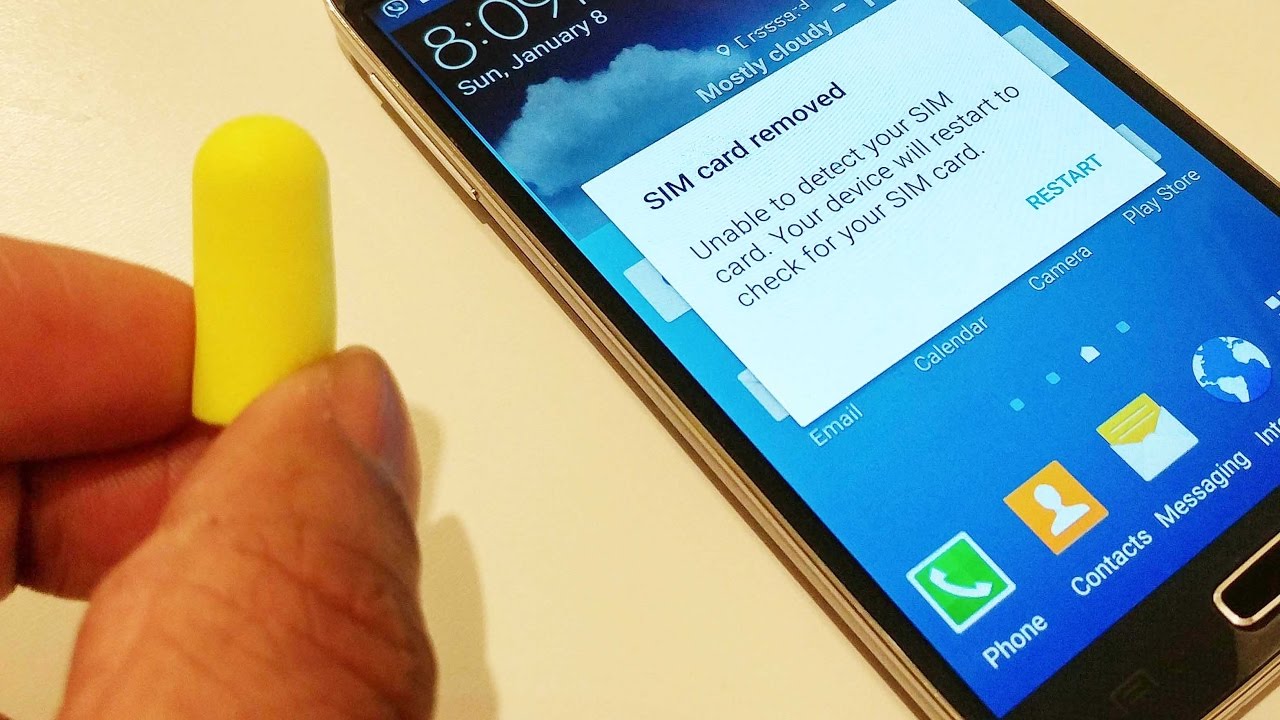Introduction
Welcome to our guide on how to perform a factory reset on a Samsung Galaxy S4. If you’re experiencing software glitches, sluggish performance, or simply want to start afresh with your device, a factory reset can help restore your Samsung Galaxy S4 to its original factory settings. This process wipes all data and settings from your phone, so it is essential to back up any important files before proceeding.
Performing a factory reset can also help resolve other issues like freezing, crashing, or excessive battery drain. It is a useful troubleshooting step before seeking professional assistance or considering a new phone.
In this article, we will guide you through two methods to perform a factory reset on your Samsung Galaxy S4: using the settings menu and using the hardware buttons. We will also provide tips on how to backup your data before performing the reset, as well as what to do after completing the process.
Before we delve into the step-by-step instructions, make sure you have a reliable internet connection and enough battery power to complete the procedure. Keep in mind that a factory reset deletes all the data on your phone, including contacts, messages, apps, and settings. So, it is crucial to create a backup to avoid losing important information.
Now, let’s get started with backing up your data and preparing your Samsung Galaxy S4 for a factory reset.
Backup Your Data
Before performing a factory reset on your Samsung Galaxy S4, it’s essential to back up any important data to ensure you don’t lose anything valuable during the process. Here’s how you can backup your data:
1. Google Account Backup: Your Samsung Galaxy S4 is likely connected to your Google account, which automatically syncs data such as contacts, calendar events, and app data. To ensure that the backup is enabled, go to Settings on your device, tap on your Google account, and make sure the relevant toggles are switched on.
2. Cloud Storage: Many apps, such as Google Drive, Dropbox, or OneDrive, offer cloud storage options. You can manually upload important files, photos, and documents to the cloud storage of your choice. This way, you can access them even after performing a factory reset.
3. PC or Mac Backup: Connect your Samsung Galaxy S4 to your computer using the USB cable. Open the device on your computer, and manually copy important files, photos, and documents to your computer’s hard drive. This method ensures a local backup that you can easily restore later.
4. App-Specific Backup: Some apps, like WhatsApp or Google Photos, offer their own backup options within the app settings. Make sure to enable these backups to save your app data, chats, and media files securely.
Take the time to ensure that all your important data is properly backed up before proceeding with the factory reset. It’s better to be safe than sorry, and having a complete backup will give you peace of mind throughout the process.
Prepare Your Phone
Before you proceed with a factory reset on your Samsung Galaxy S4, there are a few steps you should take to ensure a smooth process. Follow these steps to prepare your phone:
1. Charge Your Device: Ensure that your Samsung Galaxy S4 has a sufficient battery level or connect it to a charger. Performing a factory reset with low battery can lead to unexpected shutdowns and potential issues.
2. Remove External Storage: If you have an external SD card inserted in your device, it’s best to remove it before initiating the factory reset. This will prevent any accidental deletion or formatting of data on the SD card during the process. Make sure to safely eject the SD card from your device.
3. Log Out of Accounts: If your phone is linked to accounts such as Google, Samsung, or social media platforms, consider logging out of those accounts before performing a factory reset. This step ensures that you won’t encounter any login issues when setting up your device after the reset.
4. Record Important Information: Take note of any important information, such as Wi-Fi passwords, email settings, or app-specific settings. You will need these details to set up your device again after the factory reset. Having this information on hand will save time and frustration during the setup process.
5. Perform a Data Audit: Take some time to go through your installed apps and data to identify what you want to keep and what you can do without. This is a good opportunity to declutter your phone and only restore essential apps and files after the reset.
By following these preparation steps, you ensure that your Samsung Galaxy S4 is ready for the factory reset process. Taking the time to complete these actions will help make the reset process smoother and minimize any potential issues that may arise during or after the reset.
Performing a Factory Reset Using the Settings Menu
If you prefer a software-based approach, performing a factory reset using the Settings menu on your Samsung Galaxy S4 is a straightforward process. Here’s how you can do it:
1. Open Settings: Firstly, go to the Settings app on your Samsung Galaxy S4. You can access it by swiping down from the top of the screen and tapping on the gear icon or by locating the Settings app in the app drawer.
2. Go to the Backup & Reset Section: Scroll down until you find the “Backup & Reset” option and tap on it. This section allows you to manage your device’s data backup and perform a factory reset.
3. Select Factory Data Reset: In the Backup & Reset section, you will see the option for “Factory Data Reset.” Tap on it to proceed.
4. Review the Information: Before proceeding with the factory reset, the system will provide a brief description of what the process entails, along with a warning about data loss. Take a moment to read through the information and ensure you have backed up all your important data.
5. Confirm the Reset: Once you have reviewed the information and are ready to proceed, tap on the “Reset Phone” or “Reset Device” button. You may be asked to enter your device’s PIN, password, or pattern to confirm the reset. Once confirmed, the device will begin the factory reset process.
6. Wait for the Reset to Complete: The factory reset process may take a few minutes to complete. Your phone will restart, and you will see a progress bar indicating the reset progress. Do not interrupt the process or turn off your device during this time.
7. Setup Your Device: Once the factory reset is complete, your Samsung Galaxy S4 will reboot to its initial setup screen. Follow the on-screen prompts to set up your device, including language preferences, Wi-Fi connection, and Google account login. You can then choose to restore your data from a backup or start with a fresh setup.
Performing a factory reset using the Settings menu can help resolve various software-related issues and provide a clean slate for your Samsung Galaxy S4. However, make sure to back up your data and be aware that all personal settings, apps, and data will be erased during the process.
Performing a Factory Reset Using the Hardware Buttons
If your Samsung Galaxy S4 is unresponsive or you are unable to access the Settings menu, you can still perform a factory reset using the hardware buttons on the device. Here’s a step-by-step guide:
1. Power Off Your Device: Press and hold down the power button on your Samsung Galaxy S4 until the Power Off menu appears on the screen.
2. Access Recovery Mode: To access Recovery Mode, press and hold the “Volume Up” button and the “Home” button simultaneously. While holding these buttons, press and hold the power button until the device vibrates and the Samsung logo appears.
3. Navigate Recovery Mode: Use the volume up/down buttons to navigate through the options in Recovery Mode. Locate and highlight the “Wipe Data/Factory Reset” option using the volume buttons and select it by pressing the power button.
4. Confirm the Reset: In the next screen, confirm the factory reset by selecting the “Yes” option. This action will erase all data and settings from your Samsung Galaxy S4.
5. Wait for the Reset to Complete: The factory reset process will now begin, and you will see a progress bar indicating the reset progress. This process may take a few minutes. Ensure that your device has enough battery power and do not interrupt the process by turning off or restarting your phone.
6. Reboot Your Device: Once the factory reset is complete, you will be taken back to the Recovery Mode menu. Select the “Reboot System Now” option to restart your Samsung Galaxy S4.
7. Setup Your Device: When your device restarts, you will be greeted with the initial setup screen. Follow the on-screen prompts to set up your device, including language preferences, Wi-Fi connection, and Google account login. You can then choose to restore your data from a backup or set up your device as new.
Performing a factory reset using the hardware buttons can be useful when your device is unresponsive or experiencing software issues. It allows you to bypass the settings menu and restore your Samsung Galaxy S4 to its original factory settings. However, make sure to back up your data as the reset will erase all personal data and settings.
After the Factory Reset
After performing a factory reset on your Samsung Galaxy S4, there are a few important steps to take to ensure a smooth transition and optimal use of your device. Here’s what you need to do:
1. Restore Your Backed-Up Data: If you had previously backed up your data, now is the time to restore it. Depending on the backup method you used, you can either sign in to your Google account and let your device automatically sync the data, or manually copy back the files from your computer or cloud storage.
2. Reinstall Your Essential Apps: You will need to reinstall the apps that were not included in the backup. Head to the Play Store, search for the apps you need, and download them. This step ensures you have all the necessary apps to resume your normal smartphone usage.
3. Update Your Device: After a factory reset, it’s crucial to check for software updates and install them. Open the Settings app, go to “About Phone” or “Software Update,” and check for any available updates. Keeping your device up to date ensures you have the latest security patches and bug fixes.
4. Personalize Your Settings: Set up your device according to your preferences. This includes adjusting display settings, notification preferences, keyboard settings, and any other customization options that enhance your user experience. Take the time to explore your device’s settings and personalize it to suit your needs.
5. Reconfigure Accounts: If you logged out of your accounts before the factory reset, now is the time to log back in. Set up your email accounts, social media accounts, and any other accounts you use regularly. Make sure to update the necessary settings and permissions for each account.
6. Install Necessary Security Measures: To keep your device secure, it’s recommended to install a reliable antivirus and security app. These apps can help protect your device from malware, viruses, and other online threats.
7. Consider App Permissions: When reinstalling apps, pay attention to the permissions each app requests. Ensure that the permissions align with the app’s functionality and your privacy preferences. Grant permissions only if you are comfortable with the app having access to specific features or data on your device.
By following these steps, you can ensure a smooth transition after performing a factory reset on your Samsung Galaxy S4. Take the time to restore your data, update your device, and personalize your settings to optimize your smartphone experience.

























